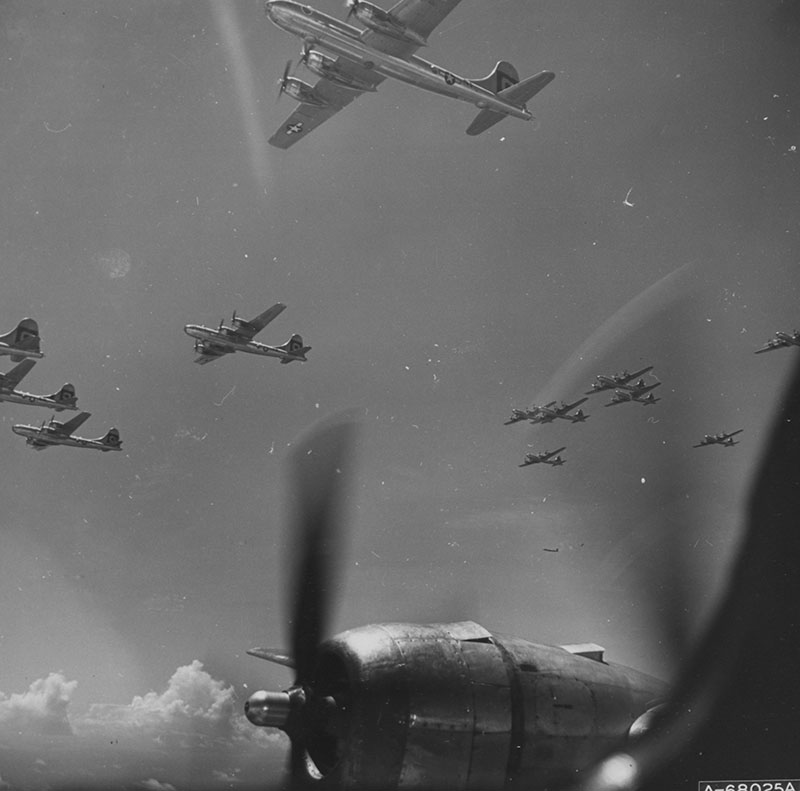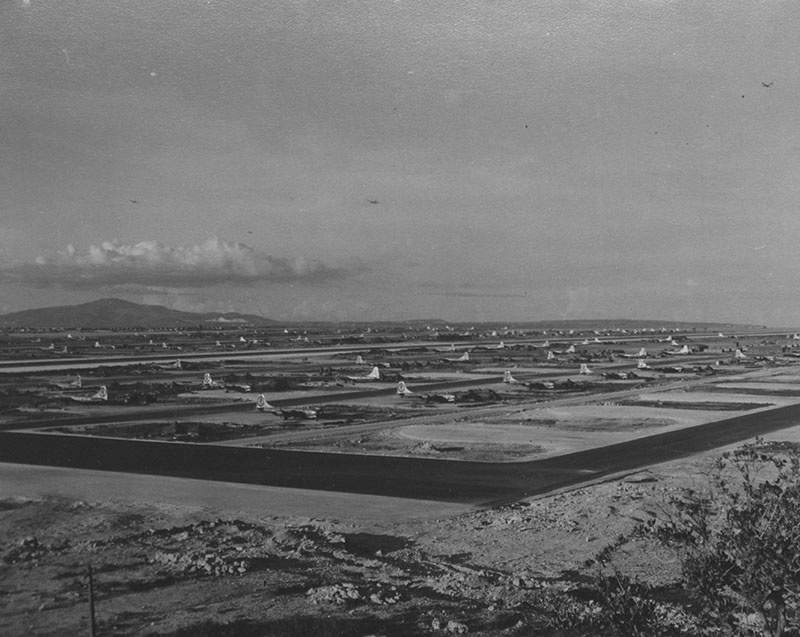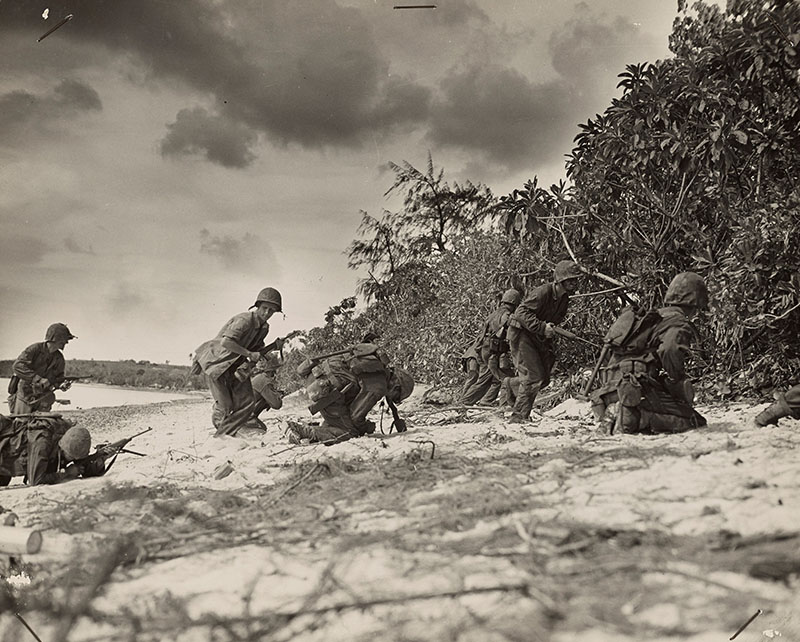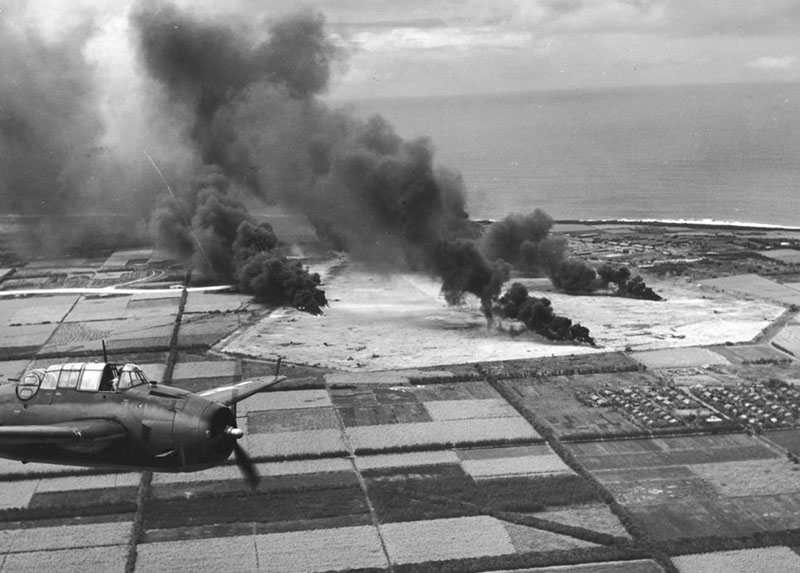Deepwater Surveys of World War II U.S. Cultural Assets in the Saipan Channel
February 24 - March 11, 2022
The Key to the Central Pacific: The Capture and Strategic Development of the Mariana Islands by the United States in World War II
By Colin M. Colbourn, Ph.D., Lead Historian, Project Recover, Postdoctoral Researcher, University of Delaware
Once captured from the Japanese, the airfields of Saipan, Tinian, and Guam became launch sites for hundreds of U.S. combat sorties featuring thousands of Boeing B-29 Superfortresses on long-range bombing missions against Japan. This monumental effort, while successful in its strategic aim, was not without the loss of American aircraft and the crews who flew them. During the Deepwater Surveys of World War II U.S. Cultural Assets in the Saipan Channel expedition, scientists, archaeologists, and historians are hoping to find the wreckage sites of some of these planes that were lost in operational accidents shortly after takeoff from Saipan and Tinian.
From the opening salvos of World War II in the Pacific, it was clear that the Mariana Islands, especially Saipan, Tinian, and Guam, were an important part of Japan’s strategic landscape. The Japanese had administered the Northern Mariana Islands of Saipan and Tinian since 1914, and captured Guam from the United States in the opening days of the war. In the intervening three decades, the Japanese built infrastructure and eventually developed significant military installations, especially on Saipan.

During the war, the Mariana Islands were an important waypoint for the movement of Japanese forces in the Pacific. As the United States began its Central Pacific campaign, the Japanese used the Mariana Islands to reinforce areas under attack, or to act as a safe harbor after a defeat. The importance of the Mariana Islands to the Japanese cannot be understated. According to many Japanese leaders who served in other locations across the Pacific, the loss of the Mariana Islands was the first major sign that Japan would ultimately lose the war.
For the United States, it was important to capture the Mariana Islands both because of their importance to the Japanese Pacific line of defense, as well as their distance to the home islands of Japan. The distance from Saipan and Tinian to Japan, at roughly 1,400 miles, was well within the 1,500 mile maximum radial range of America’s newest heavy bomber, the B-29 Superfortress. By October 1943, U.S. military planners decided that the capture of the Mariana Islands by the summer of 1944 was of the utmost strategic importance.

In June 1944, the United States launched Operation Forager, which began with the invasion of Saipan on June 15. The size of the American invasion force was unprecedented in the Pacific theater to that date. Fast Carrier Task Force 58 included 15 fleet aircraft carriers carrying nearly 1,000 combat aircraft, and the invasion force, the V Amphibious Corps, comprised three combat divisions (the 2nd and 4th Marine Divisions and the 27th Infantry Division), reaching over 70,000 Marines, soldiers, and sailors.
After nearly a month of mountainous jungle combat and hundreds of naval air sorties, American military leaders declared the island of Saipan secured on July 9, 1944. After a pause to regroup from the harsh combat on Saipan and the intervening naval Battle of the Philippine Sea, the United States launched the invasion of Guam on July 21, 1944, and subsequently invaded the less-heavily defended island of Tinian on July 24, 1944. The United States declared Tinian secured on August 1, 1944. The Battle for Guam, though, continued until August 10, 1944, as U.S. forces became bogged down in the jungle terrain fighting a large and dug-in Japanese force.

As soon as the United States captured Guam, Saipan, and Tinian, naval construction battalions began expanding the existing Japanese airfields in order to accommodate hundreds of the massive B-29 aircraft on their way to the Central Pacific Theater. Guam became the headquarters for the XXI Bomber Command and was the location of three airfields: Depot Field, North Field, and Northwest Field.
By the end of 1944, the United States had constructed three more massive airfields, including Isely Field on Saipan, as well as North Field and West Field on Tinian. On Tinian, North Field was the largest of the airfields, with four runways, each 8,000 feet in length, and enough hardstand space to accommodate nearly 300 B-29s. On October 12, 1944, “Joltin’ Josie” was the first B-29 to arrive in the Mariana Islands.

By mid-1945, the XX Air Force conducted bombing missions against the Japanese homeland sometimes in excess of 300 B-29s on each raid. On August 6, 1945, an atomic bomb was loaded into a B-29 called “Enola Gay” at North Field, Tinian. That aircraft dropped the bomb, known as “Little boy” onto the city of Hiroshima, Japan, helping to bring the war to an end and ushering in the atomic age.
For More Information
Samuel Eliot Morison, History of United States Naval Operations in World War II, Volume 8: New Guinea and the Marianas, March 1944-August 1944.
W.F. Craven and J.L. Cate, eds, The Army Air Forces in World War II, Volume V: The Pacific: MATTERHORN to Nagasaki, June 1944-August 1945.
Ronald H. Spector, Eagle Against the Sun: The American War with Japan.
Published March 4, 2022